Piping Plovers have a tough life. Their parenting job begins as soon as the first egg is laid. Then come the hatchlings that are unruly and adorable and need protection 24/7. But not many of the chicks actually survive.
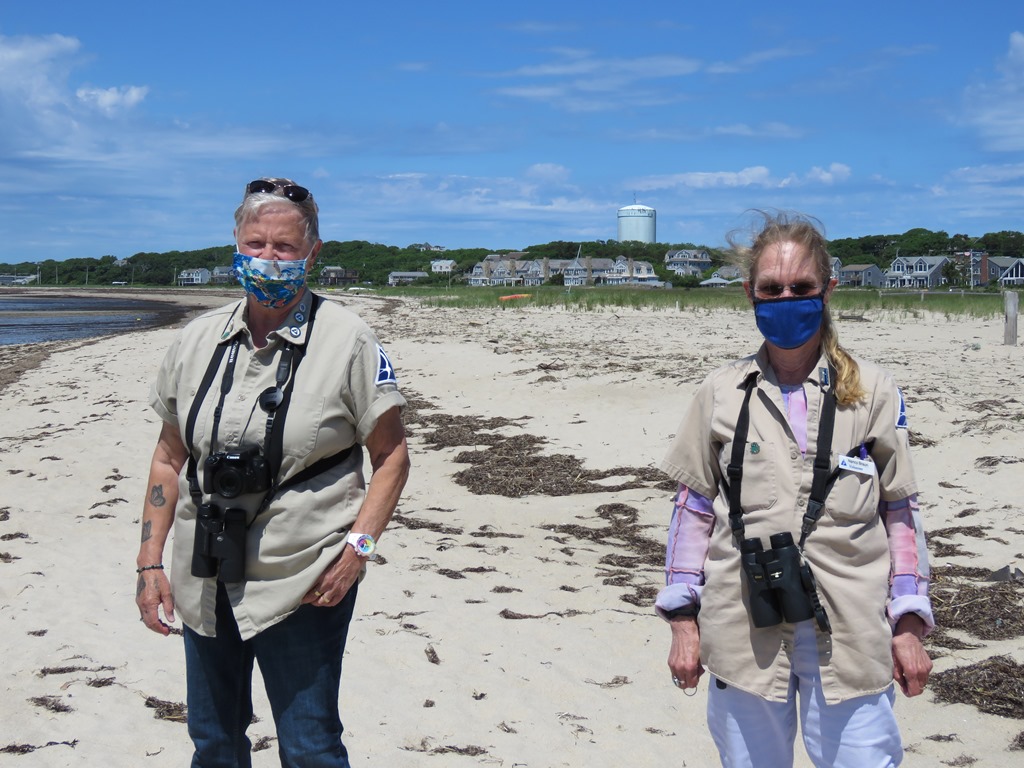
For those of us who monitor one or more nests, this is a difficult time. We get attached (we know we shouldn’t) and we’re heart-broken when/if the chicks disappear one after the other, day after day.
In 2018, two of four chicks fledged; in 2019, all four were predated. When we still had a last intrepid little one from that brood, we were all rooting for him. But he perished also. I still look at his picture, those of his siblings, and his parents.

So why do we do this every summer, year in year out? I do it because we can document them, get to know them, educate people about them, and root for them. They need us and we have do our best to protect this endangered bird.
For my friend and fellow volunteer, Nancy Braun, it’s about caring about all creatures great and small: “Whales, owls, foxes, horseshoe crabs, turtles, plovers… Any excuse to be outside…and Piping Plovers are so cute!”
Being a Piping Plover is even tougher here on the Outer Cape than in many other places. Thousands of people come to our beaches where these amazing birds are trying to survive and raise their families.
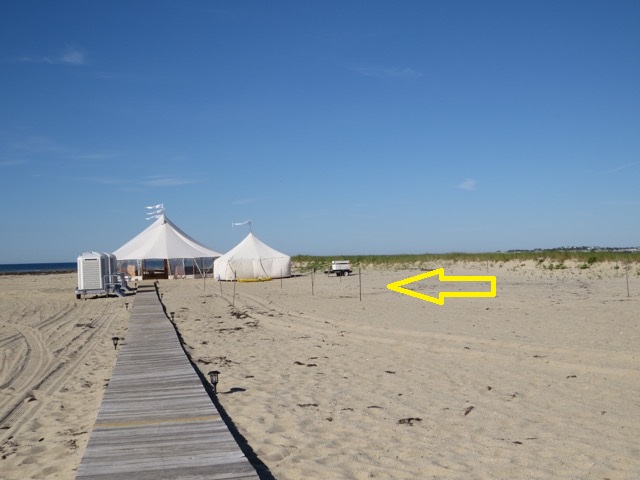
Plovers have to put up with a range of disturbances– wedding tents near their nesting sites, crowds of adults and children on the beaches. And people with dogs. Dogs who like to chase birds. To let them run off-leash is a disaster for Piping Plovers, particularly for the newly-hatched chicks who can’t outrun a dog, are about the size of a golf ball and weigh even less. And their camouflage is so perfect that you wouldn’t know it if you stepped on one.
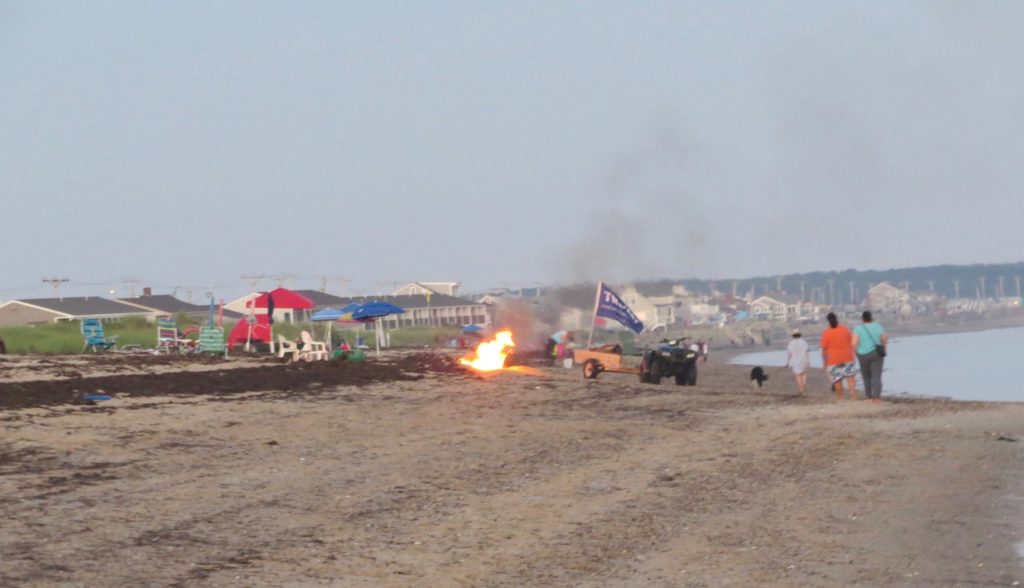
Fortunately for us, most visitors are interested in learning about these birds and understand the need to walk mindfully and give them room.
People and dogs are not the only ones who raise the risk level for Piping Plovers. High tides can wash over the nests. Crows love the eggs. As do foxes, coyotes, grackles, and, depending on location, snakes and raccoons. The chicks are always highly vulnerable.
While we can’t protect them from the predators and the weather, we can tell people their story, show them their pictures, and make the birds’ survival part of their personal experience.
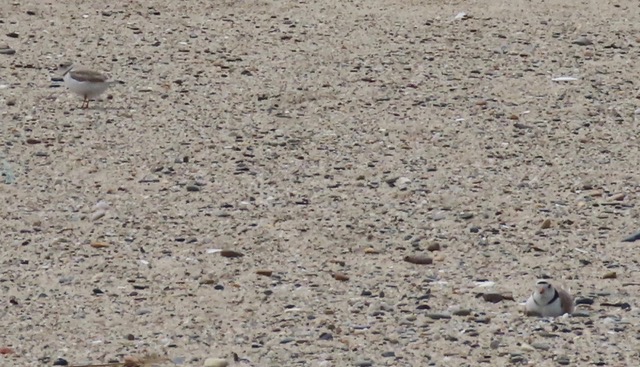
This year’s pair of birds has a nest with the typical four eggs. The adults don’t incubate until the fourth egg has been laid (this is so that all eggs hatch approximately at the same time). During the day, it’s primarily the male who does the job while the female is feeding. Laying eggs about every 36 hours is strenuous and takes a lot out of the female. She needs to feed and regain her strength for the next egg.
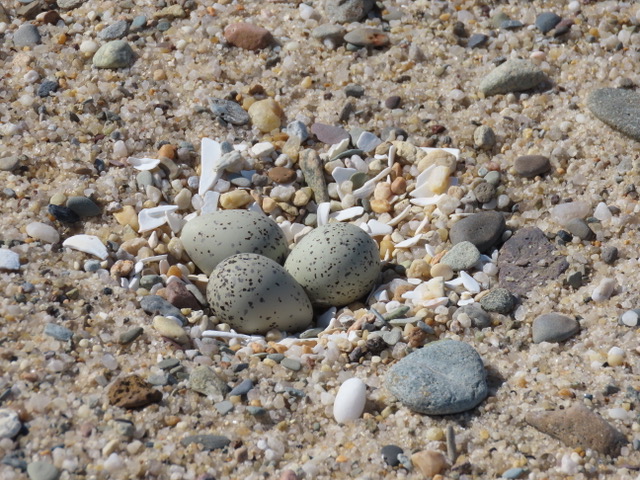
The male is an incredibly attentive parent, not just by incubating the eggs but also by helping protect the chicks once they’ve hatched (a serious job for both parents). And it is the male who stays with the young until they can fly and survive on their own. The female, on the other hand, often leaves the family a couple of weeks before to begin her migration southward.

We visit the site every day, keeping a respectable distance and using binoculars to observe the birds. We get attached (we can’t help it), we watch them, and we believe that they get to know us. We have unforeseen adventures with them, like the day a young off-leash black lab chased the male off the nest and through the dune grass. It was dramatic and scary. The dog came within feet of the nest and could easily have destroyed it. But the male bird, seeing the danger, immediately distracted the dog, who narrowly missed stepping on the eggs.
The male returned to his incubation duties very quickly after the danger had passed. And the female soon arrived and they traded places on the nest. Surprisingly, the male then approached us and followed us for a while before flying to the beach. We want to believe that he knew we had helped his family-to-be and was thanking us. That’s just make-believe, but it’s one of the aspects of this volunteer job that keeps us going.
Maybe we’ll be lucky this year and have four hatchlings and four fledged birds. Maybe the male will come back in 2021 to start a new family, and perhaps we’ll all recognize each other!

This post was contributed by Wellfleet Bay volunteer Jeannette Bragger. This is her third summer as a coastal waterbird monitor.


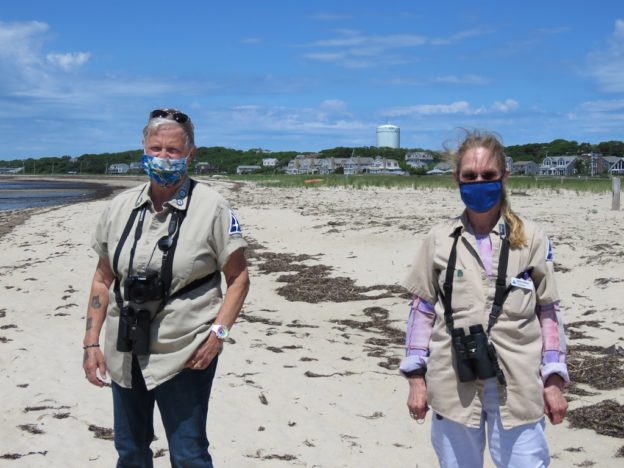
Thank you for your efforts. I hope this years clutch makes it.
This sure is tough work. Great job with extreme dedication by Jeannette and Nancy. Thank you for all that you do.
Tim
Love this story, thank you, and thank you for the work you do. It speaks to that deeply human part of ourselves, as well as that deeply plover part of these birds. Got my fingers crossed.